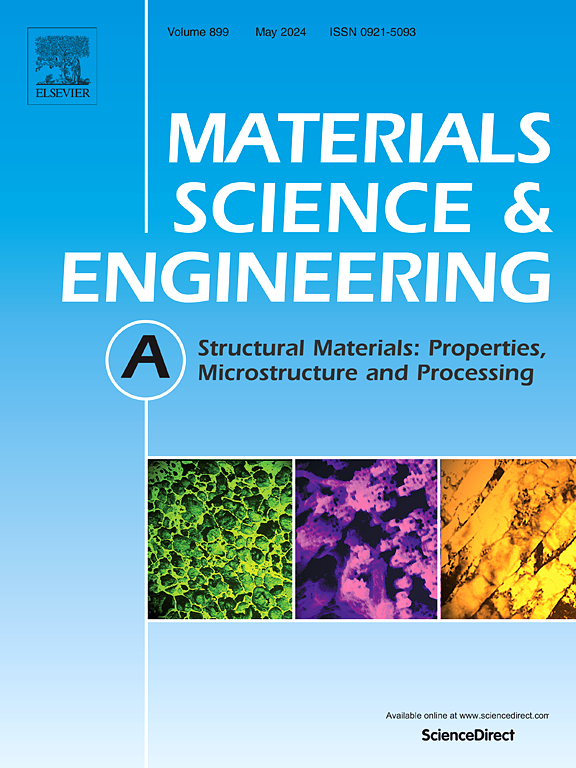Study of microstructure and mechanical properties of Ti2AlNb/TiAl LFW joint
IF 6.1
2区 材料科学
Q1 MATERIALS SCIENCE, MULTIDISCIPLINARY
引用次数: 0
Abstract
TiAl and Ti2AlNb intermetallic alloys are promising alternatives to conventional superalloys due to their high-temperature resistance, which offers potential for energy savings and weight reduction. However, the connection of dissimilar TiAl/Ti2AlNb is still a challenge. This study investigates the linear friction welding (LFW) of TiAl/Ti2AlNb alloys under specific parameters: a frequency of 45 Hz, friction pressure of 120 MPa, amplitude of 2 mm, and a welding time of 5 s. The results showed a well-formed joint with a tensile strength of 332 MPa. Microstructural analysis revealed that the joint consists of three distinct zones: the base material (BM), the thermo-mechanically affected zone (TMAZ), and the weld zone (WZ). In the WZ, the grain morphology exhibits an equiaxed crystalline structure, indicating the occurrence of dynamic recrystallization. The zone widths were wider on the Ti2AlNb side due to differences in thermo-mechanical properties. An 8 μm thick diffusion layer formed at the weld interface due to elemental diffusion. The interfacial microstructure was TiAl(γ)-Ti3Al(α2)-[O+α2]-Ti2AlNb(O), resulting from diffusion and thermal effects. The highest microhardness was found at the weld interface, where a non-uniform α2 layer of 10∼30 μm thick was present. This α2 layer is prone to cracking and represents the weak link in the joint.
Ti2AlNb/TiAl LFW接头组织与力学性能研究
TiAl和Ti2AlNb金属间合金由于其耐高温性能,具有节能和减轻重量的潜力,是传统高温合金的有希望的替代品。然而,不同TiAl/Ti2AlNb的连接仍然是一个挑战。在频率为45 Hz、摩擦压力为120 MPa、振幅为2 mm、焊接时间为5 s的条件下,研究了TiAl/Ti2AlNb合金的线性摩擦焊接(LFW)。结果表明,接头成形良好,抗拉强度为332 MPa。显微组织分析表明,接头由基材区(BM)、热机械影响区(TMAZ)和焊缝区(WZ)三个不同的区域组成。在WZ中,晶粒形貌呈现等轴晶结构,表明发生了动态再结晶。由于热力学性能的差异,Ti2AlNb侧的区宽更宽。元素扩散在焊缝界面形成8 μm厚的扩散层。界面微观结构为TiAl(γ)- ti3al (α2)-[O+α2]- ti2alnb (O),由扩散和热效应形成。焊缝界面处的显微硬度最高,存在10 ~ 30 μm厚的不均匀α2层。该α2层易开裂,是接头的薄弱环节。
本文章由计算机程序翻译,如有差异,请以英文原文为准。
求助全文
约1分钟内获得全文
求助全文
来源期刊

Materials Science and Engineering: A
工程技术-材料科学:综合
CiteScore
11.50
自引率
15.60%
发文量
1811
审稿时长
31 days
期刊介绍:
Materials Science and Engineering A provides an international medium for the publication of theoretical and experimental studies related to the load-bearing capacity of materials as influenced by their basic properties, processing history, microstructure and operating environment. Appropriate submissions to Materials Science and Engineering A should include scientific and/or engineering factors which affect the microstructure - strength relationships of materials and report the changes to mechanical behavior.
 求助内容:
求助内容: 应助结果提醒方式:
应助结果提醒方式:


